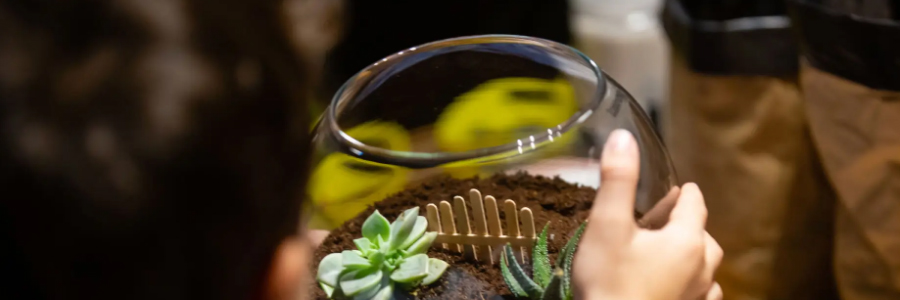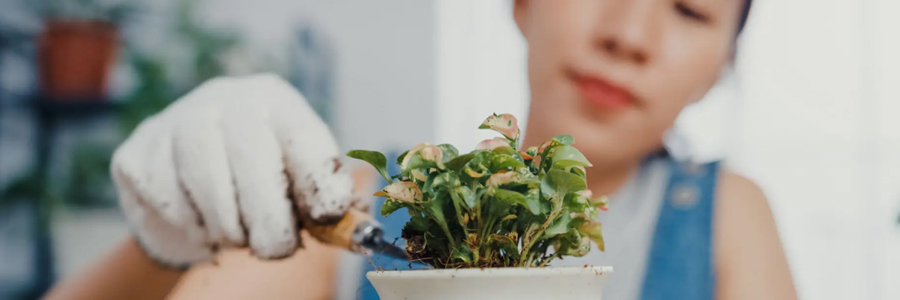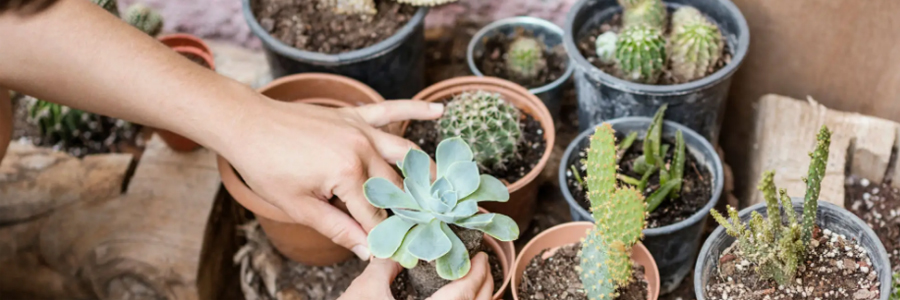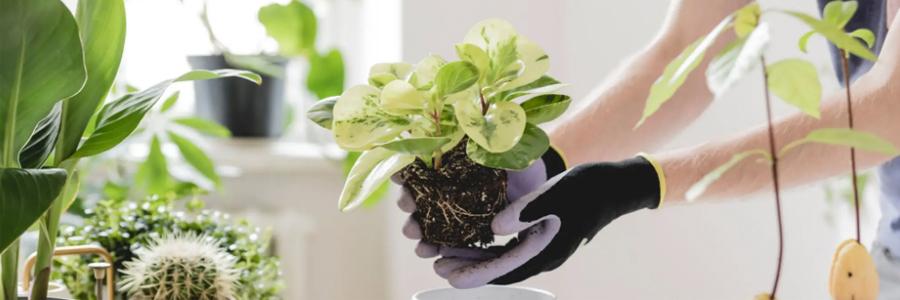Propagation Methods of Succulent Plants
Leaf Propagation
Principle and Applicable Species
Step – by – Step Process
1.Leaf Selection: Choose healthy, plump leaves that are free from any signs of damage, disease, or pests. A healthy leaf is more likely to have the energy reserves necessary for successful propagation. Gently twist or pull the leaf from the mother plant at the base, ensuring that the entire leaf, including the part attached to the stem, is removed intact.
2.Callusing: Place the detached leaves in a dry, shaded area for a few days. During this time, a callus will form at the cut end of the leaf. The callus serves as a protective layer, preventing rot and facilitating the subsequent root – forming process. The callusing period usually takes about 2 – 3 days, but this can vary depending on environmental factors such as humidity and temperature.
3.Planting the Leaves: Once callused, the leaves can be placed on top of a well – drained propagation medium. You can either lay the leaves flat on the soil surface or insert the callused end slightly into the soil. If laying the leaf flat, make sure the base of the leaf is in contact with the soil. A suitable propagation medium for succulent leaf propagation is a commercial cactus and succulent mix, which typically contains a blend of sand, perlite, and a small amount of organic matter like peat moss.
4.Providing Optimal Conditions: Keep the container with the planted leaves in a bright, but indirect light area. Succulent leaf cuttings need light to initiate growth, but direct sunlight can be too intense and may damage the delicate new growth. Maintain the soil in a slightly moist state. You can mist the soil gently with a spray bottle every few days. However, be cautious not to over – water, as excessive moisture can cause the leaves to rot.
Care for New Growth
Stem Propagation
Principle and Applicable Species
Step – by – Step Process
1.Stem Cutting: Select a healthy stem section from the mother plant. Use a clean, sharp pair of scissors or pruning shears to make a clean cut. The cutting should be at least a few centimeters long and should have a few nodes (the points where leaves are attached to the stem). For example, when propagating String of Pearls, cut a segment of the stem with several pearl – like leaves.
2.Callusing: Similar to leaf propagation, allow the cut end of the stem cutting to callus over. Place the cutting in a dry, shaded area for a few days. The callusing process helps to seal the wound and prevent infection.
3.Planting the Stem Cutting: Insert the callused end of the stem cutting into a well – drained soil mix. You can use a small pot or a propagation tray. Make sure that at least one or two nodes are buried in the soil. The soil should be kept slightly moist, but not waterlogged.
4.Light and Temperature: Place the planted stem cutting in a bright, indirect light area. The ideal temperature for stem propagation is usually between 65 – 75°F (18 – 24°C). Avoid exposing the cutting to extreme temperatures or direct sunlight, which can stress the plant.
Care for New Growth
Division
Principle and Applicable Species
Step – by – Step Process
1.Preparing the Plant: Carefully remove the entire clump of the succulent from its pot. Gently shake off the excess soil to expose the roots and the connections between the mother plant and the offsets.
2.Separation: Using a clean, sharp knife or your hands, carefully separate the offsets from the mother plant. Make sure that each offset has a sufficient amount of roots attached to it. For example, when dividing Aloe vera, look for the natural separation points between the mother plant and the pups.
3.Planting the Divisions: Plant each separated offset in a well – drained soil mix. The soil should be suitable for the specific succulent species. Water the newly planted divisions lightly to help settle the soil around the roots.
Care for New Growth

Seed Propagation
Principle and Applicable Species
Step – by – Step Process
1.Seed Collection and Selection: If collecting seeds from your own plants, wait until the seed pods are fully mature. Harvest the seeds carefully and store them in a dry, cool place. When purchasing seeds, make sure they are fresh and of good quality.
2.Soil Preparation: Use a fine – textured, well – drained soil mix for seed sowing. A mix of peat moss, perlite, and sand in a 1:1:1 ratio can be suitable. Moisten the soil slightly before sowing the seeds.
3.Sowing the Seeds: Sprinkle the seeds evenly over the soil surface. Do not bury the seeds too deeply, as many succulent seeds require light to germinate. You can cover the seeds with a very thin layer of fine sand or vermiculite.
4.Providing Germination Conditions: Place the container with the sown seeds in a warm, bright area. The ideal temperature for germination varies depending on the succulent species, but generally, a temperature between 70 – 80°F (21 – 27°C) is suitable. Keep the soil consistently moist, but not waterlogged. You can cover the container with a plastic lid or a plastic wrap to create a humid environment, but make sure to ventilate it regularly to prevent mold growth.
Care for New Growth




